#1943: the battle of midway
Text
Top-down Planes Galore

Over the last few years, thanks to my wife's English side of the family, I've visited a fair share of interesting British museums. One of these is the Shuttleworth Collection, a neat place that features an array of planes from the early half of the 20th century. If you're ever in Bedfordshire and have a hankering to see biplanes from the 1920s, I really can't recommend a visit enough. I wouldn't call myself an aviation geek, but there's something about seeing a World War II aircraft in person that stirred my imagination, and one of the souvenirs I bought from my visit was a cool pair of socks that had pixelated biplanes on them.
I specifically bought the socks because they reminded me of Capcom's 1942, the first entry in the 19XX series of shoot 'em ups, AKA shmups. Honestly, I hadn't played much of 1942 at the time, but I've always known enough about shmups to think of the game when I see pixelated biplanes. It probably stands out in my head as an interesting example of a Japanese company making a product where the whole goal is to blow up the Japanese. Yep, 1942 puts the player in the role of a Lockheed P-38 Lightning pilot maneuvering his aircraft through the skies of the Pacific Theater, on a mission to reach Tokyo and blast the heck out of everything. Apparently the game was made with Western audiences in mind, so I suppose we have capitalism to thank for a game that is both historically accurate and not historically accurate at all. (Yes, Japan lost the war, but I don't think any of the Lockheeds in the Battle of Midway had spray guns capable of shooting a billion bullets at once.)

I recently dove into 1942 and almost all of the other games in the 19XX series, mostly because I was inspired by my British nephew, who's recently been going on about planes for hours on end. You can play almost all of them via the Capcom Arcade Stadium compilations on Steam, which repackage classic arcade games and make them easily playable without the hassle of needing to fiddle with MAME emulation. (The decision to make each game DLC that you have to buy is probably questionable, but putting that aside, these packages are pretty okay.)
Anyway, I soon discovered that the original 1942 is the epitome of a 1980s arcade quarter gobbler, with a staggering 32 levels of monotony and some of the most annoyingly tinny background music known to man. It's fun to do loops around Japanese bombers for the first ten minutes, and I've always loved the power-up that gives you two flanking planes that help soak up extra damage, which would go on to be a series staple. Beyond that, 1942 grates at the soul and has not aged well.


1943: The Battle of Midway, and its slightly remixed semi-sequel 1943 Kai, are much better. Here, we bear witness to screen-filling tsunami attacks that can instantly wreck all enemies, a more forgiving difficulty level, and varied stages that don't consist of simply flying over the ocean and rice paddies. Everything's faster and a good deal more fun, and instead of solely taking down planes, now you've got boss battles against Imperial Japanese naval fleets, ending in a fight against the battleship Yamato. And thankfully, the tinny music is gone and replaced by battle-ready tracks that are nicely catchy.
This formula is refined even further in the later games, all of which loosen up on the feeling of "one American plane versus Japan" for a progressively zanier feel. 1941: Counter Attack ditches the Pacific Theater for firefights over European skies, and despite taking place in the earlier years of WWII, your pilot goes up against enemy crafts that are so extreme in size and flavor that they border on science fiction. You'll fire away at German rockets that look like they're designed to fly to the moon and tanks that take up a quarter of the screen. The end boss is a Horten Ho 229, the German prototype bomber that never went into mass production, yet is a formidable foe in this game that is sleek and almost alien-like in its movements.

19XX: The War Against Destiny takes that science fiction appeal to the maximum and says, "To hell with a historical shmup, let's go to the future with two X's, baby!" In an amusing move that would later be replicated by the Call of Duty series two decades later (when they jumped from WWII to the arena of Modern Warfare - and later Advanced Warfare), 19XX sees you taking on the Outer Limits, a terrorist organization that somehow has a futuristic army with hundreds of expendable fighter pilots. For the first time, you can choose between three different planes: the old school Lockheed P-38 Lightning (the well-balanced one), the de Havilland DH.98 Mosquito (the heavy firepower one), and the Kyushu J7W Shinden (the speedy one). All of these planes are worthy options against enemies that scale in a ludicrous fashion, and one of the bosses in the later levels is basically a mech. It's great. And because the game runs on Capcom's CPS-2 arcade board, which also powered the Street Fighter Alpha/Zero series, the action is fast and clean to a degree that's very reminiscent of the company's fighting game output.
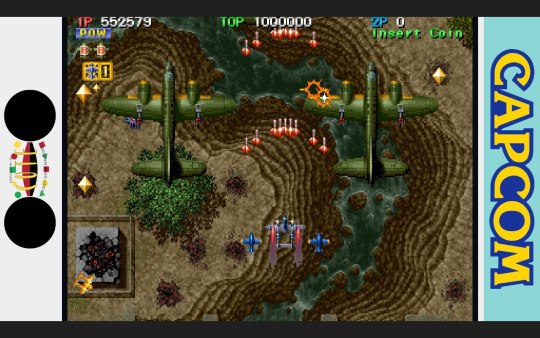
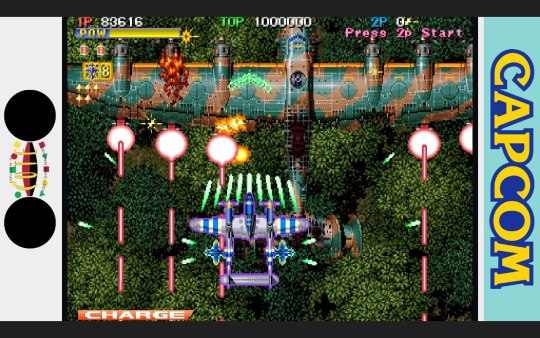
1944: The Loop Master is the last 19XX game I played, because it's the last one available in the Capcom Arcade Stadium. It takes the action back to WWII, but the gusto and fury of all the futuristic stuff exhibited in 19XX: The War Against Destiny is present and accounted for. Hello, my biplane can shoot lasers? Sure, why not! Technically, this one was developed by Eighting and not by Capcom, and all I know about Eighting is that they made the Bloody Roar games and Battle Garegga, another shmup with a cool soundtrack that samples the techno track "Jupiter Jazz," by Underground Resistance. They did a good job, and while 1943 and 19XX: The War Against Destiny stick out in my memory more than The Loop Master, I can safely say that this one features a little dude who parachutes out of your plane when you die. About time I finally saw my pilot!
Honestly, I'm not a great shmup player. I played all of these casually on my Steam Deck, and I never would've made a dent in them in the arcades. But there's something about the 19XX series that's appealing to me, at the very least on an aesthetic level. It's probably the highly detailed 2D pixelated artistry that goes into the top-down depiction of these warplanes, which are given the same slavish fanboyism that you see in Japanese mecha franchises. I think back to the several times I've visited Japan and been to antiwar exhibits like the Hiroshima Peace Memorial. Minus a few groups of nationalist nutjobs, Japan's by far and large a deeply antiwar country - but there do exist otaku who nerd out over WWII-era tech, usually not in a "the Imperial Japanese Army was right" sort of way, but in a way that basically says, "the Yamato was one of the biggest battleships ever constructed at 70,000+ tons, I shall now proceed to write an essay about why that was cool." And you know, I can appreciate that attention to technical detail, just like how I can respect the planes on exhibit in the Shuttleworth Collection. So give the 19XX games a whirl if you like planes or simply dig fine artistry - and go visit the Shuttleworth and buy those socks while you're at it.

#pixel grotto#now playing#1942#1943: the battle of midway#1941: counter attack#19xx: the war against destiny#1944: the loop master
8 notes
·
View notes
Photo

The Battle of Midway by martina1982
#Capcom#1943: The Battle of Midway#poster art#graphic design#barcade#video games#retro gaming#martina1982
22 notes
·
View notes
Text


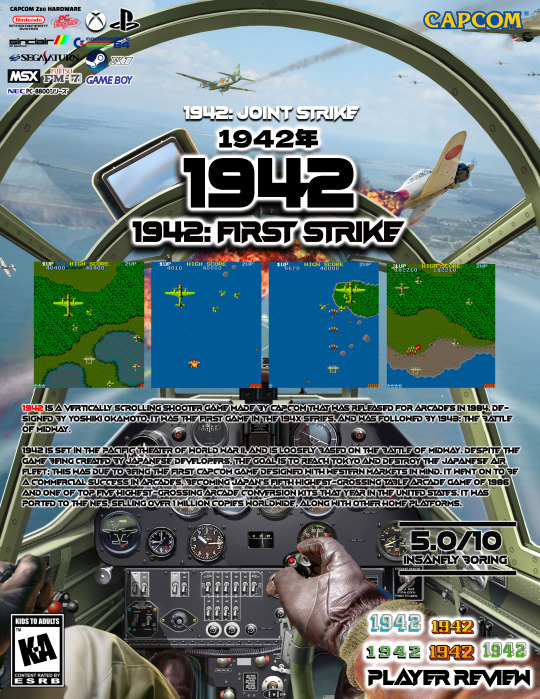
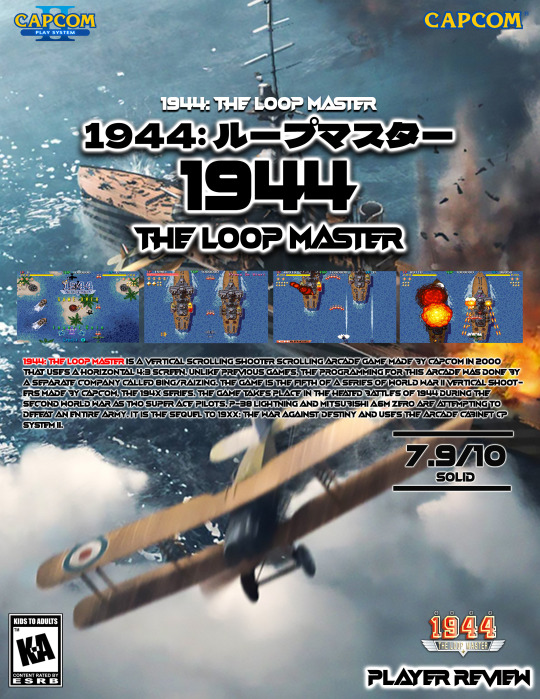
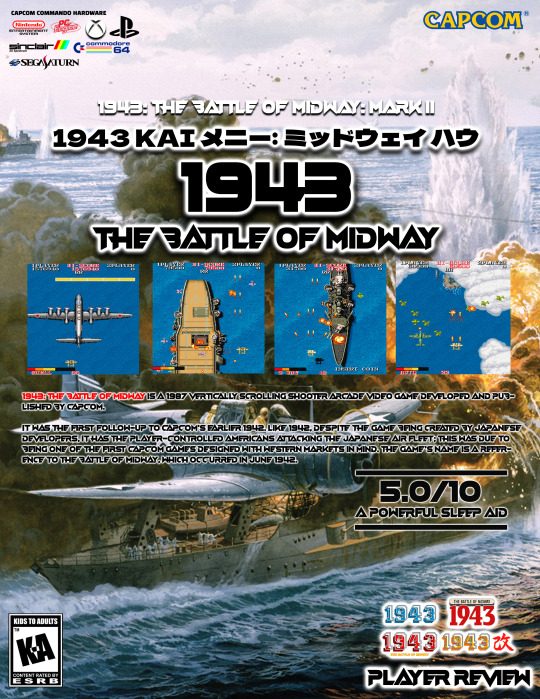
19XX
19XXシリーズは、第二次世界大戦中に実際に起きた出来事を題材にした縦スクロールシューティングゲーム群です。 最初の 3 つのゲームは非常に人気があり、Capcom Generations の第 1 巻やその後の Capcom Classics Collection など、いくつかのコンピレーション タイトルに収録されました。
#19XX Series#1941: Counter Attack#1942#1943 Kai: Midway Kaisen#1943: The Battle of Midway#19XX: The War Against Destiny#1944: The Loop Master#194X Series#1942: Joint Strike#1942: First Strike#Capcom#SHUMP#Shoot'em-Up#Vertical Scrolling Shooter
0 notes
Photo

USA 1990
18 notes
·
View notes
Text
1943: THE BATTLE OF MIDWAY (CLASSIC ARCADE GAMING)
youtube
#1943 the battle of midway#retro gaming#retrogaming#retrogames#gaming community#gamers#gamer#gameplay#gaming#video games#gaming videos#game#classic games#arcadegames#arcade#Youtube
1 note
·
View note
Text
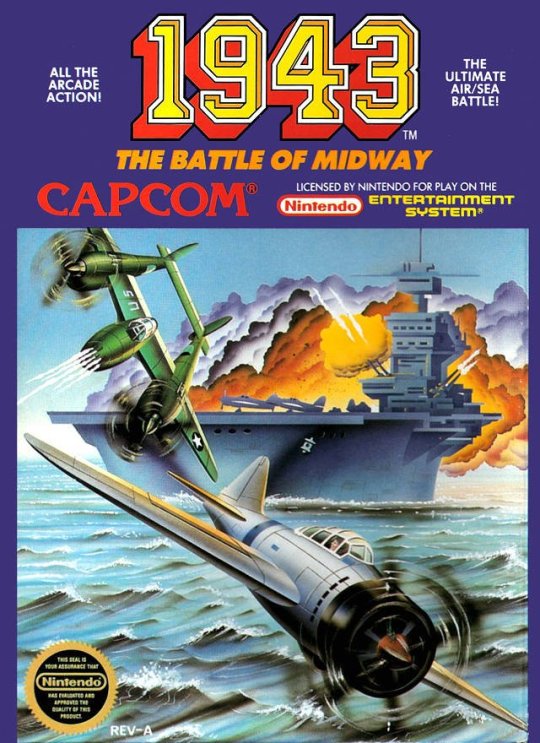
1 note
·
View note
Photo
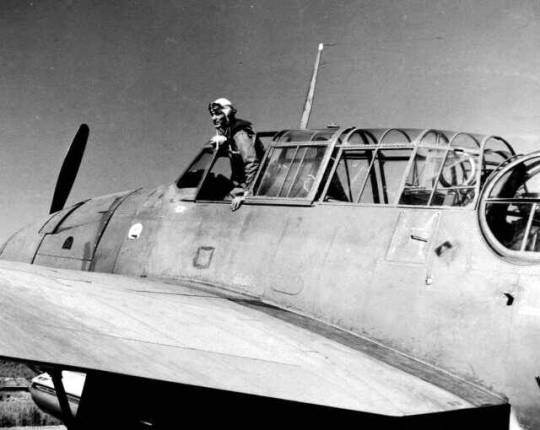
Lt. George Gay in the cockpit of a TBM of VT-11 on Guadalcanal, June 1943. Gay had been the sole surviving member of VT-8 after the Battle of Midway.
197 notes
·
View notes
Text
An updated (April 3, 2024 7:48am pst) list of WW2 movies and TV shows in chronological order
thought out WW2
-(Imitation Game 2014)
-(The Book Thief 2013)
-(The Zookeeper’s Wife 2017)
-(The Pianist 2002)
1937
October 26, 1937 Defence of Sihang Warehouse (The Eight Hundred 2020)
December 13, 1937 Nanjing Massacre
- (John Rabe 2009)
- (The Flowers of War 2011)
1938
Fall of 1938 (Munich – The Edge of War 2022)
1939
Summer 1939 (Six Minutes to Midnight 2020)
September 3, 1939 King George VI first wartime speech (King’s Speech 2010)
September 17, 1939, Soviet Union Invitation of Poland (The Way Back 2010)
November 30, 1939 Soviet Union invades Finland (The Winter War 1989)
1940
April 9, 1940 Operation Weserübung
-(April 9th [movie] 2015)
-(King’s Choice 2016)
-(Narvik 2022)
-(War Sailors 2023)
April 27, 1940 (Into the White 2011)
June 4, 1940
-Churchill gives “We Shall Fight on the Beaches” speech (Darkest Hour 2017)
-Dunkirk Evaluation (Dunkirk 2017)
July 10-October 31, 1940 Battle of Britain (Battle of Britain 1969)
1941
May 1941 (Call to Spy 2019)
June 22, 1941 Operation Barbarossa
-(Fortress of War [The Brest Fortres 2010)
-(Defiance 2008)
September 8, 1941, Siege of Leningrad begins.
-(Battle of Leningrad [Saving Leningrad] 2019)
-(Leningrad 2009)
October 1941 Battle of Moscow (The Last Frontier [The Final Stand] 2020)
October 1941 Battle of Sevastopol (Battle for Sevastopol 2015)
December 7, 1941, the Empire of Japan attacks Pearl Harbor (Tora! Tora! Tora! 1970)
December 8, 1941 Japan invades Shanghai International Settlement (Empire of the Sun 1987)
1942
January 20, 1942, Wannsee Conference (Conspiracy 2001)
February 1942 Battle of the Atlantic (Greyhound 2020)
February 1942 (The Railway Man 2013)
February 19, 1942, Bombing of Darwin (Australia 2008)
Spring 1942 (U-571 2000)
April 18, 1942 The Doolittle Raid (In Harm’s Way 2018)
June 4, 1942 Battle of Midway (Midway 2019)
1942 Summer Occupation of Jersey Island (Another Mother’s Son 2017 Prime)
July, 10 1942 Easy Company Trains in Camp Tocca (Band of Brothers 01x10 Currahee 2001)
July 21, 1942, Kokoda Track Campaign (Kokoda: 39th Battalion 2006)
August 7, 1942, 1st Marine Division land on Guadalcanal (The Pacific Ep. 1 Guadalcanal/Leckie 2010)
August 19, 1942, Dieppe Raid (Dieppe 1993)
August 23, 1942 Battle of Stalingrad begins (Stalingrad 1993)
September 1942 Formation of Troop 30 (Age of Heroes 2011)
September 18, 1942, 7th Marines Land on Guadalcanal (The Pacific Ep. 2 Basilone 2010)
Autumn of 1942 Battle of the Atlantic (Das Boot 1981)
October 18, 1942, Operation Grouse (Heavy Water War Ep. 2 2015)
November 8, 1942, Operation Torch (The Big Red One 1980)
November 10-17 1942 Vasily Zaytsev kills 225 German Soldiers during the Battle of Stalingrad (Enemy at the Gates 2001)
December 1942 The 1st Marine Division on Guadalcanal is relieved (The Pacific Ep. 3 Melbourne 2010)
December 15, 1942, Battle of Mount Austen (Thin Red Line 1998)
1943
March 13-14 1943, liquidation of the Kraków Ghetto -(Schindler’s List 1993)
April 17, 1943 Operation Mincemeat (Operation Mincemeat 2021)
April 19, 1943, beginning of the Warsaw Uprising (Uprising 2001)
May 4, 1943, Final Mission of The Memphis Bell (Memphis Bell 1990)
May 15, 1943, Salamo Arouch and his family arrive in Auschwitz Concentration Camp (Triumph of the Spirit 1989)
May 27, 1943 Louis Zamperini plane crashes on a search and rescue mission (Unbroken 2014)
May 30, 1943 first All-American Girls Professional Baseball League game played (A League of Their Own 1992)
June 25, 1943, 100th Bomb Group flew its first 8th Air Force combat mission (Master of the Air: Part One 2024)
July 1943
-(The Tuskegee Airmen 1995)
-(The Liberator Ep. 1 2020)
-(Heavy Water War Ep. 5 2015)
July 16, 1943, The 100th Bomb Group bombed U-Boats in Tronbhdim (Masters of the Air: Part Two 2024)
August 17, 1943 the 4th Bomb Wing of the 100th Bomb Group bombed Regenberg (Masters of the Air: Part Three 2024)
September 16, 1943, William Quinn and Charles Bailey leave Belgium (Masters of the Air: Part Four 2024)
September 18, 1943 John ‘Bucky’ Egan returns from leave to join the mission to bomb Munster (Master of the Air: Part Five 2024
October 14, 1943, John ‘Bucky’ Egan interrogated at Dulag Lut, Frankfurt Germany (Masters of the Air: Part Six 2024)
December 26, 1943, 1st Marine Division lands on Cape Gloucester (The Pacific Ep. 4 Gloucester/Pavuvu/Banika 2010)
1944
January 22, 1944, Battle of Anzio
-(The Liberator Ep. 2 2020)
-(Red Tails 2012)
-(Anzio 1968)
February 20, 1944, Hydro Ferry bombing (Heavy Water War Ep. 6 2015)
March 7, 1944, Stalag Luft III Sagan, Germany, Germans find the concealed radio Bucky was using to learn news of the War (Master of the Air: Part Seven 2024)
March 24/25, 1944 Allied Mass Escape of Stalag Luft III (The Great Escape 1963)
June 1944 (Cross of Iron 1977)
June 6, 1944, 00:48 & 01:40 First airborne troops begin to land on Normandy (Band of Brothers 02x10 Day of Days 2001)
June 6, 1944, 06:30 D-Day landings
-(Storming Juno 2010)
-(Saving Private Ryan 1998)
June 10, 1944, Easy Company Takes Carentan (Band of Brothers 03x10 Carentan 2001)
June 15-July 9, 1944 Battle of Saipan
-(Windtalkers 2002)
-(Oba: The Last Samurai 2011)
July, 1944 The Monuments Men land in Normandy (The Monuments Men 2014)
July 20, 1944 Operation Valkyrie (Valkyrie 2008)
August 12, 1944, The 332nd Fighter Group attack Radar stations in Southern France (Masters of the Air: Part Eight 2024)
September 15, 1944, U.S. Marines landed on Peleliu at 08:32 (the Pacific Ep. 5 2010)
September 16, 1944, U.S Marines take Peleliu Airfield (the Pacific Ep. 5 2010)
September 17, 1944, Operation Market Garden
-(Band of Brothers 04x10 Replacements 2001)
-(A Bridge Too Far 1977)
October 2, 1944 Battle of Scheldt (Forgotten Battle 2021)
October 12, 1944, Battle of Peleliu, Assault on Bloody Nose Ridge (the Pacific Ep. 7 Peleliu Hills 2010)
October 13, 1944, Rovaniemi public buildings were destroyed (Sisu 2022)
October 14, 1944, Erwin Rommel is arrested (Rommel 2012 Prime)
October 22/23, 1944, 2100 – 0200 Operation Pegasus (Band of Brothers 05x10 Crossroads 2001)
November 1944 middle of the Battle of Hürtgen Forest (When Trumpets Fade 1998)
December 16, 1944, Battle of the Bulge (Band of Brothers 06x10 Bastogne 2001)
December 1944 (Hart’s War 2002)
1945
January 2, 1945 (The Liberator Ep 3 2020)
January 10, 1945 (Attack Force Z)
January 13, 1945, Battle of Foy (Band of Brothers 07x10 The Breaking Point 2001)
January 30, 1945 The Raid at Cabanatuan (The Great Raid 2002)
February 14, 1945, David Webb rejoins the 506th in Haguenau (Band of Brothers 08x10 The Last Patrol 2001)
February 19, 1945, Battle of Iwo Jima starts.
- (Letters from Iwo Jima 2006)
- (The Pacific Ep. 8 Iwo Jima 2010)
- (Flags of our Fathers 2006)
March 21, 1945, Operation Carthage (The Bombardment 2021)
April, 1945 (Fury 2014)
April 5, 1945, 506th Finds abandoned Concentration Camp
(Band of Brothers 09x10 Why We Fight 2001)
April 26, 1945, near the end of the war in Europe (A Woman in Berlin 2008)
April 29, 1945, 45th Infantry Division liberated Dachau Concentration camp (The Liberator Ep. 4 2020)
May 2, 1945, Fall of Berlin
-(Downfall 2004)
-(Jojo Rabbit 2019)
May 1945 Battle of Okinawa
-(Hacksaw Ridge 2016)
-(The Pacific Ep. 9 Okinawa 2010)
May 7, 1945, Germany Surrenders V-E Day
- (Master of the Air: Part Nine 2024)
- (Band of Brothers 10x10 Points 2001)
July 30, 1945, USS Indianapolis sank.
(USS Indianapolis 2016)
August 15, 1945, The Empire of Japan surrenders end of the War.
-(Oppenheimer 2023)
-(The Pacific Part Ten: Home 2010)
September 11, 1945 US Military search and Arrest Japanese Leaders for war crimes (Emperor 2012)
1946
April 29, 1946 Tokyo War Crimes Tribunal (Tokyo Trial 2016)
62 notes
·
View notes
Note
Hello! Dropping into your inbox to ask you about your research for
"Lent From Tomorrow (today was too small for us)." You must have done a ton of historical research for it to get so many of those details. I think that sort of thing is a lot of fun, and I'm very curious to know if you came across anything especially cool/fascinating/weird during your writing research.
Ooh, thank you for the ask! How fun!
There's SO MUCH research in this fic, from the codebreaking to the science of how to defrost a supersoldier to what was on the radio on specific days in 1943. I've got a whole folder of just Lent From Tomorrow research, and the back half of my WIP document is just copy-pastes of quotes from soldiers, scientists, codebreakers, radio hosts, etc.
But, to be fair, I've been reading nonfiction about WWII codebreakers for like 20 years. It's one of my special interests~ and something that I just love learning about. WWII *battles*, I don't care about at all, but everything else about the time period is fascinating to me -- probably because of Molly McIntire, haha.
My FAVORITE little tidbit actually comes up in this coming week's chapter, so I'm not going to spoil it, but it's my favorite recollection in Code Girls by Liza Mundy. That was definitely the book that I used the most for this fic, since the main characters are basically all "code girls," or code omegas, whatever. I also used a lot from PBS Nova's The Mind of a Codebreaker, which I watched when it first came out in 1999 and it rewired my entire brain. I immediately did a report on the women of Bletchley Park in 7th grade (and another on the WASP/WAVE/WAC pilots, so I was really excited to be able to have Carol Danvers make a cameo in Lent!).
But I also looked up specifics for just about every scene -- the snippet of Quiz Kids that's on the wireless radio when Steve and the Asset are listening to the wireless is a quote and actually aired that day. The Torah portion that Steve hears when he goes to shul with the gals and Scott is the Torah portion from that particular Shabbat service in December 1942. The movie scene is the actual movie, newsreel, and cartoon that were shown together at a theater in Washington, DC, on that Friday in March 1943.
I leaned on a former-scientist friend of mine to point me in the right direction to find out how they would have frozen and defrosted the Asset, and also how The Arm might work in a way that isn't just "::shrug:: it's Superhero Science." Her husband is a mathematician, and she suggested some avenues that Steve might have written his big 1929 math paper about, too. And then I read a bunch of math papers from the 1920s and tried to understand them and it was. a lot.
I also did a lot of research into Steve's various disabilities and ailments and the treatments available by the early 1940s, particularly asthma and his childhood polio. (I'm forgetting whether the backstory of his polio experience has actually shown up in the fic yet or if it's coming up soon in a chapter? If it hasn't been posted yet, then spoiler, I guess, Steve had polio as a kid [although I *think* that's canon?]). Steve's experience of being disabled is really important to me, and I wanted it to matter and be a part of his life in this story (and any story I write about Steve).
There's a lot more specific stuff coming up in the back half of the fic, now that we've reached the midway point... Bucky's backstory requires a lot of research into things that I don't know as much about, just because I don't tend to look into actual battle/military histories, and because [redacted for spoilers].

14 notes
·
View notes
Text
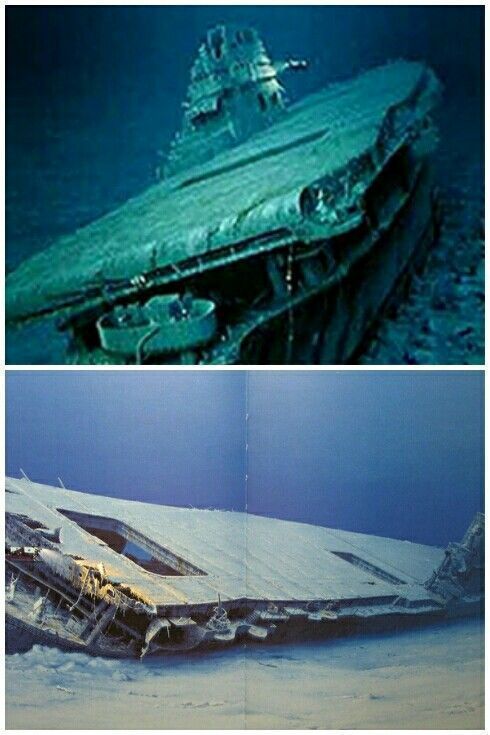
AN AMERICAN HEROINE – FROM WWII TO VIETNAM
The USS YORKTOWN (CV-10) was the tenth aircraft carrier to serve in the United States Navy. Under construction as BON HOMME RICHARD, this new Essex-class carrier was renamed in honor of YORKTOWN (CV-5) sunk at the epic Battle of Midway (June 1942). Built in an amazing 16 ½ months at Newport News, Virginia, YORKTOWN was commissioned on April 15, 1943. World War II’s famous “Fighting Lady” would participate significantly in the Pacific offensive that began in late 1943 and ended with the defeat of Japan in 1945. YORKTOWN received the Presidential Unit Citation and earned 11 battle stars for service in World War II.
In the 1950s, YORKTOWN was modernized to operate jet aircraft as an attack carrier (CVA). In 1957, she was re-designated an anti-submarine aircraft carrier (CVS), and would later earn 5 battle stars for service off Vietnam (1965-68). The ship also recovered the Apollo 8 astronauts and capsule (December 1968). YORKTOWN was decommissioned in 1970 and placed in reserve.
In 1975, this historic ship was towed from Bayonne, NJ to Charleston to become the centerpiece of Patriots Point Naval & Maritime Museum.
2 notes
·
View notes
Text

SUPERMAN 1978 – 1987 5-FILM COLLECTION
FEATURING SUPERMAN: THE MOVIE, SUPERMAN II, SUPERMAN II: THE RICHARD DONNER CUT, SUPERMAN III, AND SUPERMAN IV: THE QUEST FOR PEACE WILL BE AVAILABLE FOR THE FIRST TIME AS A REMASTERED COLLECTION IN 4K RESOLUTION WITH HIGH DYNAMIC RANGE (HDR)
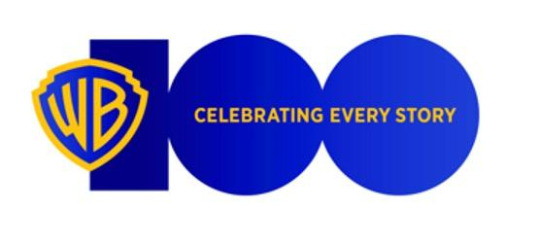
As part of the year-long centennial celebration for the 100th anniversary of Warner Bros. Studio, five films featuring the iconic DC Super Hero Superman – Superman: The Movie, Superman II, Superman II: The Richard Donner Cut, Superman III, and Superman IV - will be available for purchase in a five-film collection on 4K Ultra HD Disc May 9 and on Digital April 18.
Based on the DC character created by Jerry Siegel and Joe Shuster, the Superman films star Christopher Reeve as the legendary “Man of Steel.”
On April 18, the Superman 1978 – 1987 5-Film Collection will be available to purchase on Ultra HD Blu-ray™ Disc from online and in-store at major retailers and available for purchase Digitally from Amazon Prime Video, AppleTV, Google Play, Vudu and more.
The Ultra HD Blu-ray Combo Packs will include an Ultra HD Blu-ray disc with the feature films in 4K with HDR, a Blu-ray disc with the feature films and special features in HD, and a Digital version of each film.
Ultra HD Blu-ray showcases 4K resolution with High Dynamic Range (HDR) and a wider color spectrum, offering consumers brighter, deeper, more lifelike colors for a home entertainment viewing experience like never before.
For the complete 4K Ultra HD experience with HDR, a 4K Ultra HD TV with HDR, an Ultra HD Blu-ray player and a high-speed HDMI (category 2) cable are required.

Ultra HD Blu-ray Elements
Superman: The Movie Ultra HD Blu-ray Combo Pack contains the following previously released special features on Blu-ray Disc:
Commentary by Ilya Salkind and Pierre Spangler
The Making of Superman – vintage featurette
Superman and the Mole-Men – vintage featurette
Super-Rabbit – 1943 WB cartoon
Snafuperman – 1944 WB cartoon
Stupor Duck – 1956 WB cartoon
TV Spot
Teaser Trailer
Theatrical Trailer
Superman II Ultra HD Blu-ray Combo Pack contains the following previously released special features on Blu-ray Disc:
Commentary by Ilya Salkind and Pierre Spengler
The Making of Superman II – 1980 TV Special
Superman’s Soufflé – Deleted scene
Fleischer Studios’ Superman vintage cartoons
First Flight
The Mechanical Monster
Billion Dollar Limited
The Arctic Giant
The Bulleteers
The Magnetic Telescope
Electric Earthquake
Volcano
Terror on the Midway
Theatrical trailer
Superman II: The Richard Donner Cut Ultra HD Blu-ray Combo Pack contains the following previously released special features on Blu-ray Disc:
Commentary by Richard Donner and Tom Mankiewicz
Introduction by Richard Donner – featurette
Superman II: Restoring the Vision – featurette
Deleted scenes
Lex and Ms. Teschmacher head north
Lex and Ms. Teschmacher head south
The villains enter the fortress
He’s all yours, boys
Clarke and Jimmy
Lex’s gateway
Famous Studios vintage cartoons
Japoteurs
Showdown
Eleventh Hour
Destruction, Inc.
The Mummy Strikes
Jungle Drums
The Underground World
Secret Agent
Superman III Ultra HD Blu-ray Combo Pack contains the following previously released special features on Blu-ray Disc:
Commentary by Ilya Salkind and Pierre Spengler
The Making of Superman III – 1983 TV special
Deleted scenes
Save my baby
To the rescue
Making up
Going to see the boss
Hatching the plan
The con
Rooftop ski
Boss wants this to go
Superman honored
Gus’ speech
Hanging up on Brad
Theatrical trailer
Superman IV: The Quest for Peace Ultra HD Blu-ray Combo Pack contains the
following previously released special features on Blu-ray Disc:
Commentary by Mark Rosenthal
Superman 50th anniversary special – 1988 TV special
Deleted scenes
Clark’s morning
Jeremy’s letter
Superman’s visit
Nuclear Man’s prototype
Metropolis after hours
Lex ponders
Flying sequence (extended scene)
Battle in Smallville
Battle in the U.S.S.R.
Nuclear arms race
Superman’s sickness
Red alert
By my side
Lark and Lacy say goodbye
No borders
Theatrical trailer

About the Films:
Superman: The Movie
Academy Award winners Marlon Brando and Gene Hackman head an all-star cast in the fantastic, action-packed film that made Christopher Reeve an international star playing the greatest superhero of all time. From the doomed planet of Krypton, two parents launch a spaceship carrying their infant son to earth. Here he grows up to become Clark Kent, mild-mannered reporter for the Metropolis Daily Planet. But with powers and abilities far beyond those of ordinary men, he battles for truth and justice as Superman.
An Alexander Salkind presentation and directed by Richard Donner (The Goonies, Lethal Weapon, The Lost Boys), the film stars Academy Award winner Marlon Brando (On the Waterfront, The Godfather) as Jor-El, Academy Award winner Gene Hackman (The French Connection, Unforgiven) as Lex Luthor, Margot Kidder as Lois Lane, and Christopher Reeve as Clark Kent/Superman.
Based on the DC character created by Jerry Siegel and Joe Shuster, Superman was produced by Pierre Spengler from a story by Mario Puzo and a screenplay by Puzo, David Newman, Leslie Newman, and Robert Benton. Ilya Salkind served as executive producer. The film also features Ned Beatty as Otis, Jackie Cooper as Perry White, Glen Ford as Jonathan Kent, Margot Kidder as Lois Lane, Valerie Perrine as Eve Teschmacher, and Terrance Stamp as General Zod.
Superman was nominated for three Academy Awards, including Best Film Editing, Best Music (Original Score) and Best Sound. The film also received a Special Achievement Academy Award for Visual Effects. In 2017, Superman was inducted into the Library of Congress National Film Registry.
SYNOPSIS
Superman II (Theatrical Version)
Unwittingly released from Phantom Zone imprisonment, three superpowered Planet Krypton criminals Terence Stamp, Sarah Douglas and Jack O'Halloran) plan to enslave Earth – just when Superman (Christopher Reeve) decides to show a more romantic side to Lois Lane (Margot Kidder). Gene Hackman also returns as Lex Luthor in this sequel that features a top supporting cast, witty Richard Lester direction, and visuals that astound and delight.
Directed by Richard Lester (A Hard Day’s Night, The Three Musketeers), the film stars Academy Award winner Gene Hackman as Lex Luthor, Margot Kidder as Lois Lane, and Christopher Reeve as Clark Kent/Superman.
Based on the DC character created by Jerry Siegel and Joe Shuster, the film was produced by Pierre Spengler from a story by Mario Puzo and a screenplay by Puzo, David Newman, and Leslie Newman. Alexander Salkind and Ilya Salkind served as executive producer. The film also features Ned Beatty as Otis, Jackie Cooper as Perry White, Sarah Douglas as Ursa, Jack O’Halloran as Non, Valerie Perrine as Eve Teschmacher, Susannah York as Lara, and Terrence Stamp as General Zod.

Superman II: The Richard Donner Cut
Director Richard Donner began shooting Superman II while concurrently filming Superman: The Movie, though the theatrical version of the film was ultimately directed by Richard Lester. In 2006, Donner’s original unique vision was released for the first time. Jor-El (Marlon Brando in footage cut from the theatrical version) appears in key scenes that amplify Superman lore and deepen the relationship between father and son. Lois Lane (Margot Kidder) plots more schemes to unmask Clark Kent as Superman (Christopher Reeve). With so many changes, large and small, including a different beginning and resolution, this version is an eye-opening alternate experience.
Directed by Richard Donner, the film stars Academy Award winner Marlon Brando as Jor-El, Academy Award winner Gene Hackman as Lex Luthor, Margot Kidder as Lois Lane, and Christopher Reeve as Clark Kent/Superman.
Based on the DC character created by Jerry Siegel and Joe Shuster, the film was produced by Pierre Spengler and Michael Tau from a story by Mario Puzo and a screenplay by Puzo, David Newman, and Leslie Newman. Ilya Salkind served as executive producer. The film also features Ned Beatty as Otis, Jackie Cooper as Perry White, Sarah Douglas as Ursa, Jack O’Halloran as Non, Valerie Perrine as Eve Teschmacher, Susannah York as Lara, and Terrence Stamp as General Zod.
Superman III
Meet Gus Gorman (Richard Pryor), a naive computer-programming natural. For him, a keyboard is a weapon – and, as a result, Superman faces the microelectronic menace of his life. Christopher Reeve reprises his signature role, deepening his character’s human side as Clark Kent sees Lana Lang (Annette O’Toole) at a Smallville High class reunion. And when the Man of Steel becomes his own worst enemy after exposure to Kryptonite, Reeve pulls off both roles with dazzling skill. Relive Superman III with all its heart, heroism and high-flying humor.
Directed by Richard Lester, the film stars Christopher Reeve as Clark Kent/Superman and Margot Kidder as Lois Lane.
Based on the DC character created by Jerry Siegel and Joe Shuster, the film was produced by Pierre Spengler from a screenplay by David Newman and Leslie Newman. Alexander Salkind and Ilya Salkind served as executive producer. The film also features Richard Pryor as Gus Gorman, Jackie White as Perry White, Marc McClure as Jimmy Olsen, Annette O’Toole as Lana Lang, and Robert Vaughn as Ross Webster.
Superman IV: The Quest for Peace
Christopher Reeve not only dons the title hero’s cape for the fourth time but also helped develop the movie’s provocative theme: nuclear disarmament. To make the world safe for nuclear arms merchants, Lex Luthor (Gene Hackman) creates a new being to challenge the Man of Steel: the radiation-charged Nuclear Man (Mark Pillow). The two foes clash in an explosive extravaganza that sees Superman save the Statue of Liberty, plug the volcanic eruption of Mount Etna and rebuild the demolished Great Wall of China.
Directed by Sydney J. Furie (The Ipcress File, Iron Eagle), the film stars Academy Award winner Gene Hackman as Lex Luthor, Margot Kidder as Lois Lane, and Christopher Reeve as Clark Kent/Superman.
Based on the DC character created by Jerry Siegel and Joe Shuster, the film was produced by Yoram Globus and Menahem Golan from a story by Christopher Reeve & Lawrence Konner and Mark Rosenthal and a screenplay by Konner & Rosenthal. The film also features Jackie Cooper as Perry White, Marc McClure as Jimmy Olsen, Jon Cryer as Lenny, Sam Wanamaker as David Warfield, Mark Pillow as Nuclear Man, and Mariel Hemingway as Lacy Warfield.
Preorder on Amazon. Direct link here.

15 notes
·
View notes
Text
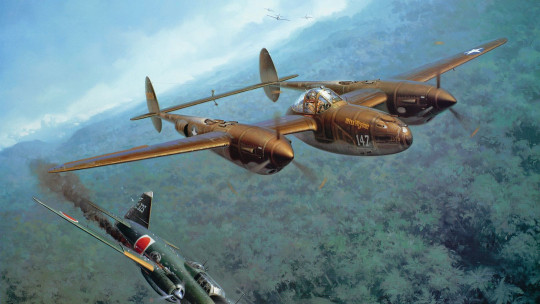
A P-38 Pilot Describes the Attack on Admiral Isoroku Yamamoto
P-38 pilot Roger Ames participated in the shooting down of Japan’s most important admiral.
This article appears in: Fall 2012
By Robert F. Dorr
When American air ace Major John Mitchell led 16 Lockheed P-38 Lightning fighters on the longest combat mission yet flown (420 miles) on April 18, 1943, Mitchell’s target was Isoroku Yamamoto, the Japanese admiral considered the architect of the Pearl Harbor attack.
Mitchell’s P-38 pilots, using secrets from broken Japanese codes, were going after Yamamoto, the poker-playing, Harvard-educated naval genius of Japan’s war effort. Mitchell’s P-38s intercepted and shot down the Mitsubishi G4M “Betty” bomber carrying Yamamoto. After the admiral’s death, Japan never again won a major battle in the Pacific War.
No band of brothers ever worked together better than the men who planned, supported, and flew the Yamamoto mission. Yet, after the war, veterans fell to bickering over which P-38 pilot actually pulled the trigger on Yamamoto.
There was one thing they never disagreed on. Like most young pilots of their era, they believed the P-38 Lightning was the greatest fighter of its time.
Roger J. Ames (1919-2000) flew the Yamamoto mission. This first-person account by Ames was recorded by the author in 1998 and appeared in his 2007 book, Air Combat: A History of Fighter Pilots; it has never before appeared in a magazine.
Intercepting a Crucial Japanese Radio Message
The downing of Admiral Isoroku Yamamoto is arguably the most studied fighter engagement of the Pacific War. Yamamoto, 56, was commander in chief of the Japanese Combined Fleet and the architect of the Pearl Harbor attack. He called himself the sword of Japan’s Emperor Hirohito. He claimed he was going to ride down Pennsylvania Avenue on a white horse and dictate the surrender of the United States in the White House.
Yamamoto studied at Harvard (1919-1921), traveled around America, was twice naval attaché in Washington, D.C., and understood as much about the United States, including U.S. industrial power, as any Japanese leader. In April 1943, Yamamoto was trying to prevent the Allies from taking the offensive in the South Pacific and was visiting Japanese troops in the Bougainville area.
On the afternoon of April 17, 1943, Major John Mitchell, commander of the 339th Fighter Squadron, was ordered to report to our operations dugout at Henderson Field on Guadalcanal. The 1st Marine Division had captured the nearly completed field the previous summer and named it for Major Lofton Henderson, the first Marine pilot killed in action in World War II when his squadron engaged the Japanese fleet that was attacking Midway.
Now Mitchell found himself surrounded by high-ranking officers. They told him the United States had broken the Japanese code and had intercepted a radio message advising Japanese units in the area that Yamamoto was going on an inspection trip of the Bougainville area.
The message gave Yamamoto’s exact itinerary and pointed out that the admiral was most punctual. They told Mitchell that Frank Knox, secretary of the Navy, had held a midnight meeting with President Franklin D. Roosevelt regarding the intercepted message. It was decided that we would try to get Yamamoto if we could. The report of the meeting was probably inaccurate because Roosevelt was on a rail trip away from Washington, but the plan to get Yamamoto unquestionably began at the top.
Eighteen P-38s Selected For the Mission
The Navy would never have admitted it, but the Army’s P-38 was the only fighter with the range to make the approximately 1,100-mile round trip. We were under the command of the Navy at Guadalcanal, so you can bet they’d have taken the job if they were able.
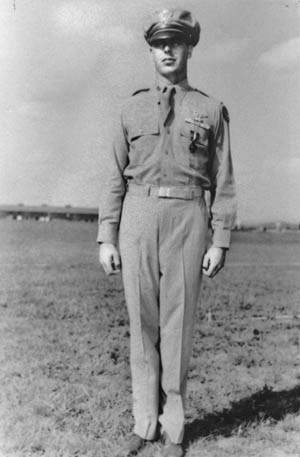
First Lieutenant Rex T. Barber, one of two Americans originally credited with shooting down Yamamoto. He later was given sole credit for the kill.
According to the intercepted message, Yamamoto and his senior officers were arriving at the tiny island of Ballale just off the coast of Bougainville at 9:45 the next morning. The message said that Yamamoto and his staff would be flying in Mitsubishi G4M “Betty” bombers, escorted by six Zeros. The Yamamoto trip was to include a visit to Shortland Island and Bougainville.
Mitchell was to be mission commander of 18 P-38s that would intercept, attack, and destroy the bombers. That’s all the P-38s we had in commission.
The Plan of Attack
Led by Mitchell, we planned the flight in excruciating detail. Nothing was left to chance. Yamamoto was to be at the Ballale airstrip just off Bougainville at 9:45 the next morning and we planned to intercept him 10 minutes earlier about 30 miles out. To ensure complete surprise, we planned a low level, circuitous route staying below the horizon from the islands we had to bypass, because the Japanese had radar and coastwatchers just as we did.
We plotted the course and timed it so that the interception would take place upon the approach of the P-38s to the southwestern coast of Bougainville at the designated time of 9:35 am. Each minute detail was discussed, and nothing was taken for granted. Takeoff procedure, flight course and altitude, radio silence, when to drop belly tanks, the tremendous importance of precise timing and the position of the covering element: all were discussed and explained until Mitchell was sure that each of his pilots knew his part and the parts of the other pilots from takeoff to return.
Mitchell chose pilots from the 12th, 70th, and 339th Fighter Squadrons. These were the only P-38 squadrons on Guadalcanal. The only belly tanks we had on Guadalcanal were 165-gallon tanks, so we had to send to Port Moresby for a supply of the larger 310-gallon tanks. We put one tank of each size on each plane. This gave us enough fuel to fly to the target area, stay in the area where we expected the admiral for about 15 minutes, fight, and come home. The larger fuel tanks were flown in that night, and ground crews worked all night getting them installed along with a Navy compass in Mitchell’s plane.
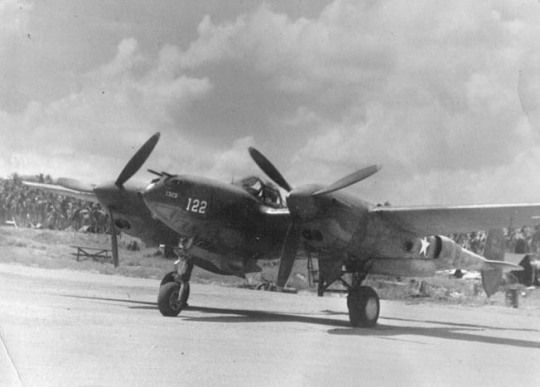
Captain Tom Lanphier’s P-38 #122 Phoebe on Guadalcanal with the 339th Fighter Squadron. Lanphier was originally given credit for half a kill before investigations revealed that Barber was the sole marksman.
Four of our pilots were designated to act as the “killer section” with the remainder as their protection. Mitchell said that if he had known there were going to be two bombers in the flight he would have assigned more men to the killer section. The word for bomber and bombers is the same in Japanese. (Author’s note: Ames is incorrect on this point about the Japanese language).
Captain Thomas G. Lanphier, Jr., led the killer section. His wingman was 1st Lt. Rex T. Barber. 1st Lt. Besby F. “Frank” Holmes led the second element. His wingman was 1st Lt. Raymond K. Hine.
The cover section was led by Mitchell and included myself and 11 other pilots. Eight of the 16 pilots on the mission were from the 12th Fighter Squadron, which was my squadron.
Although 18 P-38s were scheduled to go on the mission, only 16 were able to participate because one plane blew a tire on the runway on takeoff and another’s belly tanks failed to feed properly.
“Bogeys! Eleven O’Clock, High!”
It was Palm Sunday, April 18, 1943. But since there were no religious holidays on Guadalcanal, we took off at 7:15 am, joined in formation, and left the island at 7:30 am, just two hours and five minutes before the planned interception. It was an uneventful flight but a hot one, at from 10 to 50 feet above the water all the way. Some of the pilots counted sharks. One counted pieces of driftwood. I don’t remember doing anything but sweating. Mitchell said he may have dozed off on a couple of occasions but received a light tap from “The Man Upstairs” to keep him awake.
Mitchell kept us on course flying the five legs by compass, time, and airspeed only. As we turned into the coast of Bougainville and started to gain altitude, after more than two hours of complete radio silence, 1st Lt. Douglas S. Canning––Old Eagle Eyes–– uttered a subdued “Bogeys! Eleven o’clock, high!” It was 9:35 am. The admiral was precisely on schedule, and so were we. It was almost as if the affair had been prearranged with the mutual consent of friend and foe. Two Betty bombers were at 4,000 feet with six Zeros at about 1,500 feet higher, above and just behind the bombers in a “V” formation of three planes on each side of the bombers.

Admiral Isoroku Yamamoto in dress whites, photographed on the morning he was killed, addresses a group of pilots at Rabaul, April 18, 1943. His death came as a tremendous blow to the Japanese.
We dropped our belly tanks. We put our throttles to the firewall and went for altitude. The killer section closed in for the attack while the cover section stationed themselves at about 18,000 feet to take care of the expected fighters from Kahili. As Mitchell said, “The night before we knew the Japanese had 75 Zeros on Bougainville and I wanted to be where the action was.
I thought, “Well, I’m going on up higher and we’re going to be up there and have a turkey shoot.’” We expected from 50 to 75 Zeros should be there to protect Yamamoto just as we had protected Secretary of the Navy Frank Knox when he came to visit a couple of weeks before. We’d had as many fighters in the air to protect Knox as we could get off the ground. I guess the Japanese had all their fighters lined up on the runway for inspection. Anyway, none of the Zeros came up to meet us. Our intercept force encountered only the Zeros that were escorting Yamamoto.
Lanphier and Barber: The First to Make Contact With the Enemy
Lanphier and Barber headed for the enemy. When they were about a mile in front and two miles to the right of the bombers, the Zeros spotted them. Lanphier and Barber headed down to intercept the Zeros. The Bettys nosed down in a diving turn to get away from the P-38s. Holmes, the leader of the second element, could not release his belly tanks so, in an effort to jar them loose, he turned off down the coast, kicking his plane around to knock the tanks loose. Ray Hine, his wingman, had no choice but to follow him to protect him. So Lanphier and Barber were the only two going after the Japs for the first few minutes.
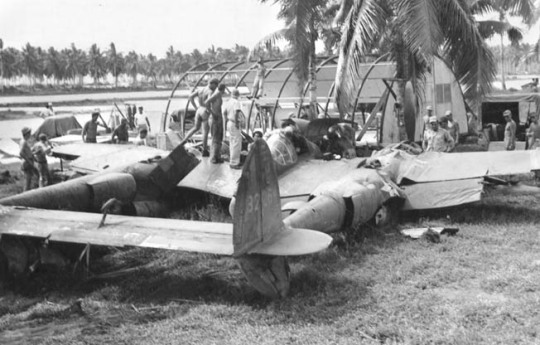
Ground crewmen look over Lieutenant Robert Petit’s P-38, Miss Virginia, which Barber borrowed for the mission; he returned it to Henderson Field with over 100 bullet holes.
From this point onward, accounts of the fight get mixed up about who shot down whom. Briefly, here is probably what happened based on the accounts of all involved. I did not see what was happening 18,000 feet below me.
As Lanphier and Barber were intercepted by the Zeros, Lanphier turned head-on into them and shot down one Zero and scattered the others. This gave Barber the opportunity to go for the bombers. As Barber turned to get into position to attack the bombers, he lost sight of them under his wing, and when he straightened around he saw only one bomber, going hell bent for leather downhill toward the jungle treetops.
Barber went after the Betty and started firing over the fuselage at the right engine. And as he slid over to get directly behind the Betty, his fire passed through the bomber’s vertical fin and some pieces of the rudder separated from the plane. He continued firing and was probably no more than 100 feet behind the Betty when it suddenly snapped left and slowed down rapidly, and as Barber roared by he saw black smoke pouring from the right engine.
Shooting Down the Betty
Barber believed the Betty crashed into the jungle, although he did not see it crash. And then three Zeros got on his tail and were making firing passes at him as he headed toward the coast at treetop level taking violent evasive action. Luckily, two P-38s from Mitchell’s flight saw his difficulty and cleared the Zeros off his tail. Holmes said it was he and Hine that chased the Zeros off Barber’s tail. Barber said he then looked inland and to his rear and saw a large column of black smoke rising from the jungle, which he believed to be the Betty he’d shot.
As Barber headed toward the coast he saw Holmes and Hine over the water with a Betty bomber flying below them just offshore. He then saw Holmes and Hine shoot at the bomber with Holmes’ bullets hitting the water behind the Betty and then walking up and through the right engine of the Betty. Hines started to fire, but all of his rounds hit well ahead of the Betty. Then Holmes and Hine passed over the Betty and headed south.
Barber said that he then dropped in behind the Betty flying over the water and opened fire. As he flew over the bomber it exploded, and a large chunk of the plane hit his right wing, cutting out his turbo supercharger intercooler. Another large piece hit the underside of his gondola, making a very large dent in it.
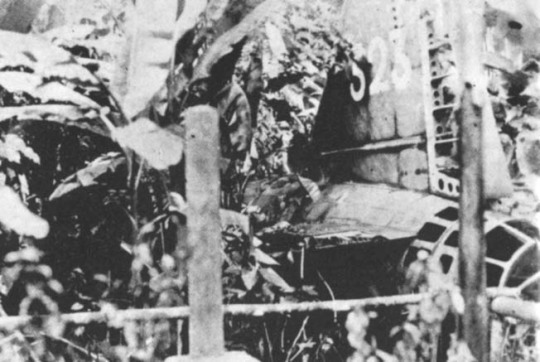
Wreckage of Yamamoto’s “Betty” lies on the jungle floor on the island of Bougainville.
After this, he, Holmes, and Hine fired at more Zeros. Barber said that both he and Holmes shot down a Zero, but Hine was seen heading out to sea smoking from his right engine. As Barber headed home, he saw three oil slicks in the water and hoped that Hine was heading for Guadalcanal, but that was not the case.
Lanphier, having scattered the Zeros, found himself at about 6,000 feet. Looking down, he saw a Betty flying across the treetops, so he came down and began firing a long, steady burst across the bomber’s course of flight, from approximately right angles. In another account, Lanphier said he was clearing his guns. By both accounts, he said he felt he was too far away, yet, to his surprise, the bomber’s right engine and right wing began to burn and then the right wing came off and the Betty plunged into the jungle and exploded.
Return to Guadalcanal
Lanphier said that three Zeros came after him, and he called Mitchell to send someone down to help him. Then, hugging the earth and the treetops while the Zeros made passes at him, he unwittingly led them over a corner of the Japanese fighter strip at Kahili.
He then headed east and, with the Zeros on his tail, he got into a high-speed climb and lost them at 20,000 feet; he got home with only two bullet holes in his rudder. Contrast this to the 104 bullet holes in Barber’s plane, plus the knocked-out intercooler and the huge dent in his gondola.
Flying back to Guadalcanal, I heard Lanphier get on the radio and say, “That SOB won’t dictate peace terms in the White House.” This really upset me because we were to keep complete silence about the fact that we had gone after Yamamoto. The details of this mission were not to leave the island of Guadalcanal.
13 notes
·
View notes
Text





CAPCOM GENERATIONS
は、カプコンが PlayStation および Sega Saturn 向けに制作した 5 つのビデオ ゲームのコンピレーション シリーズです。 各巻には、特定のシリーズまたはゲーム ジャンルからの 3 ~ 4 つのゲームが含まれており、オリジナルのアーケード バージョンから直接移植されました (元はスーパー NES ゲームだった Super Ghosts'n Ghosts を除く)。 各ディスクには、歴史、ヒント、アートワーク、キャラクタープロフィール、アレンジされた音楽 (ゲーム自体でも有効にすることができます)、および各ゲームのその他のロック解除可能なコンテンツを備えた「コレクション モード」も含まれています。 PlayStation バージョンのゲームには、DualShock コントローラーのサポートも含まれていました。
#Capcom#Capcom Generations#カプコン ジェネレーション#Capcom Generations: Wings of Destiny#カプコン ジェネレーション -第1集 撃墜王の時代-#Capcom Generation Dai-ichi-shū Gekitsui Ō no Jidai#Capcom Generation Collection 1: The Era of Flying Aces#1942#1943: The Battle of Midway#1943 Kai: Midway Kaisen#Capcom Generations 2: Chronicles of Arthur#Capcom Generation Collection 2: The Demon World and the Knight#Capcom Generation Dai-ni-shū Makai to Kishi#Ghosts 'n Goblins#Makaimura#Dai Makaimura#Ghouls 'n Ghosts#Super Ghouls 'n Ghosts#Chō Makaimura#Capcom Generations 3: The First Generation#Capcom Generation Collection 3: History Begins Here#Capcom Generation Dai-san-shū Koko ni Rekishi Hajimaru#Vulgus#SonSon#Pirate Ship Higemaru#Exed Exes#Capcom Generations: Blazing Guns#カプコン ジェネレーション -第4集 弧高の英雄-#Capcom Generation Dai-yon-shū Kokō no Eiyū#Capcom Generation Collection 4: Lone Hero
0 notes
Note
Have you been to the Nimitz museum in Fredericksburg or know what's there? I'll have an opportunity to go there in the new year and was wondering if you had any recommendations for stuff to read up on before going? I've got some very shallow knowledge about the Pacific War and feel like it'll be a lot more rewarding if I go in more prepared.
you should talk to @misanderousmisfit who visited the Nimitz museum very recently!! i have to admit i have literally never stepped foot in Texas.
i really know very little about the pacific theatre of WWII, shamefully. most of my WWII knowledge is related to the ARMY on the western front 1943-1945. (I know a weirdly large amount about the battle of the Ruhr pocket for instance.) ummm, maybe watch the movie “Midway”? It’s been a long time (5 years ish) since I saw it but i believe “Hacksaw Ridge” is also about the Pacific theatre, though what I really remember from that movie is a lot of weird religious moralizing and andrew Garfield doing a very weird accent etc. Though I was 15 when I watched it so maybe my memories are a little skewed. And I continue to recommend Craig Symonds’ new Nimitz biography, which I read last January (after he signed my copy 😋)
#talk to Rachel ❤️#the project i was working on in freshman year of college & that summer was a novel about#an oil painter embedded in the first infantry division over the last three months of the war#(it was a whole American artist program at the time)#i was writing it literally the WEEK i started writing WWGATTAI lol#now i look back at it and see how much of it made it into WWGATTAI lol#whole sentences lifted… the two OCs in that project influenced so much of how I wrote ice & mav to start out#lots of similar themes… charges of fraternization… brotherly trauma bond… baseball metaphors…#issues of responsibility for killing & responsibility as a commanding officer… mmmm#omg last names only to suggest an unreliable narrator too!!! whoa#i got 40k into that project; got hooked on top gun; immediately dropped it & never picked it up again#gay pilots took priority‼️‼️
5 notes
·
View notes
Text
world war 2
World War II (1939-1945) was a global conflict that involved many of the world's nations. It was the deadliest and most widespread war in history, resulting in significant geopolitical changes and shaping the course of the 20th century. Here are some key details about World War II:
1. Causes:
Treaty of Versailles (1919): The harsh conditions imposed on Germany after World War I contributed to economic hardships and resentment, providing fertile ground for the rise of Adolf Hitler and the Nazi Party.
Expansionist Policies: Aggressive expansionist policies by Germany, Italy, and Japan in the 1930s, seeking territorial gains, further heightened tensions.
Invasion of Poland (1939): The war officially began on September 1, 1939, when Germany, led by Hitler, invaded Poland. This prompted Britain and France to declare war on Germany.
2. Major Axis Powers:
Germany: Led by Adolf Hitler and the Nazi Party.
Italy: Led by Benito Mussolini.
Japan: Led by Emperor Hirohito.
3. Major Allied Powers:
United Kingdom: Led by Prime Minister Winston Churchill.
Soviet Union: Initially signed a non-aggression pact with Germany but later joined the Allies after being invaded by the Germans.
United States: Entered the war after the Japanese attack on Pearl Harbor in December 1941.
4. Theaters of War:
European Theater: Mainly involved the conflict in Europe, including the Western Front and Eastern Front.
Pacific Theater: Focused on the war in the Pacific, particularly between Japan and the United States.
5. Major Battles:
Battle of Stalingrad (1942-1943): A turning point on the Eastern Front, where the Soviet Union defeated the German army.
D-Day (June 6, 1944): Allied forces, primarily from the United States, the United Kingdom, and Canada, launched a massive amphibious invasion on the beaches of Normandy, France.
Battle of Midway (1942): A decisive naval battle in the Pacific that weakened Japan's naval power.
6. Holocaust:
The systematic genocide of six million Jews and millions of others, including Romani people, Poles, Soviets, disabled individuals, and others, by Nazi Germany and its collaborators.
7. End of the War:
1945: Germany surrendered in May, marking the end of the war in Europe.
1945: The United States dropped atomic bombs on Hiroshima and Nagasaki in August, leading to Japan's surrender in September.
8. Consequences:
Formation of the United Nations: Established in 1945 to promote international cooperation and prevent future conflicts.
Cold War: Tensions between the United States and the Soviet Union emerged, leading to a decades-long ideological and political struggle.
World War II had a profound impact on the geopolitical landscape, reshaping the world and influencing the course of history for years to come. The war's aftermath also led to efforts to establish international organizations aimed at preventing similar conflicts in the future.
2 notes
·
View notes
Text
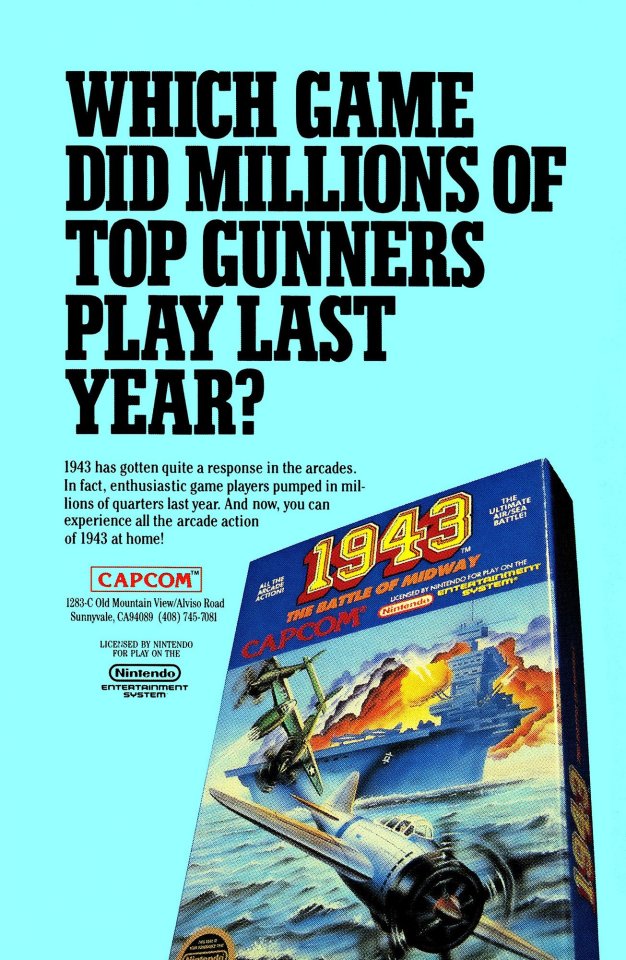
1 note
·
View note